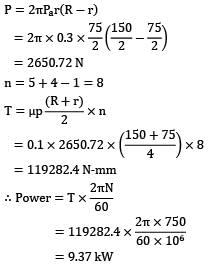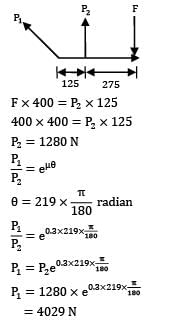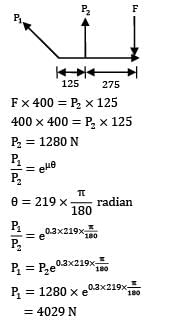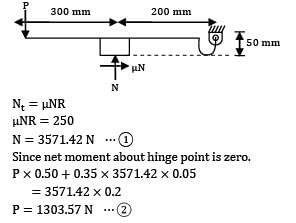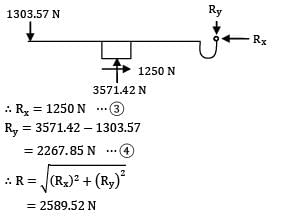Test:Design Of Clutches And Brakes (Level - 2) - Mechanical Engineering MCQ
20 Questions MCQ Test - Test:Design Of Clutches And Brakes (Level - 2)
In designing a plate clutch, assumption of uniform wear condition is made because
Self-locking is NOT possible in case of
| 1 Crore+ students have signed up on EduRev. Have you? Download the App |
In a friction disc with uniform wear condition the pressure varies with radius as
Multiple plate clutch is used on two-wheelers as
Consider the following arrangement as shown in figure
![]()
The ideal location of the clutch should be
In a centrifugal clutch the force with which the shoe presses against the driven member is
On the motors with low starting torque, the type of the clutch to be used
Consider the following statements regarding friction clutches:
I. For a given torque capacity, the size of the multi plate clutch is smaller than that of the single plate clutch.
II. For a given torque capacity, the size of the multi plate clutch is larger than that of the single plate clutch.
III. More heat is generated in the multi-plate clutch.
Which of the following statements is/are true?
Which one of the following is the correct expression for the torque transmitted by a conical clutch of outer radius R, Inner radius r and semi-cone angle α assuming uniform pressure? (Where W = total axial load and, μ = coefficient of friction)
(A) ![]()
(B) ![]()
(C) ![]()
(D) ![]()
Assertion (A): A clutch is the best means to connect a driving shaft with a driven shaft for regular power transmission.
Reason (R): A clutch can be frequently engaged and disengaged at operator’s will.
A multiple disc clutch has 4 steel and 3 bronze discs and each surface has a mean radius of 60 mm. The coefficient of friction is 0.25. Assuming uniform wear, the power capacity of the clutch corresponding to a rotational speed of 400 rpm and an axial force of 300 N is
A single disc clutch operating under dry sliding condition transmits 150 N-m. The average coefficient of friction is 0.3 and maximum operating pressure is 0.5 MPa. The ratio between the outside radius and inner radius is 1.73 under uniform wear conditions, if the outside radius of the clutch is to be minimum, the inside radius will have to be
A new friction clutch is subjected to 20kN axial load during operation, the average speed of shaft is 750 rpm. Central hole diameter is one-fourth of the outer diameter: Assume pressure 0.4 MN/m2 and μ = 0.015
The power transmitted is __________ (kW)
A multi-disc clutch transmits 50 kW of power at 1400 r.p.m. Axial intensity of pressure is not to exceed 0.15 N/mm2 , and the coefficient of friction for the friction surfaces is 0.12. The inner radius of the disc is 80 mm, and is 0.7 times the outer radius. Determine the number of discs required to transmit the given power. Assume uniform wear condition.
A band brake acts on the circumference of the drum of 300 mm diameter and half of the circumference of the drum is covered by the band. The band provides a braking torque of 250 N-m, the tension in the tight side is ( Take  )
)
In a simple band brake, load is applied as shown in figure. It acts as self-energizing brake if __________.
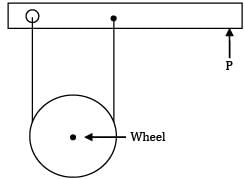
The allowable tension in the belt of a band type brake shown below is 1 kN and the coefficient of friction between the belt and the 500 mm diameter drum is 0.1. The maximum braking torque that can be applied to the brake is
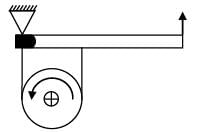
A multi-disk clutch consists of five steel plates and four bronze plates. The inner and outer diameters of the friction disks are 75 mm and 150 mm respectively. The coefficient of friction is 0.1 and the intensity of pressure on friction lining is limited to 0.3 N/mm2 . Assume uniform wear theory, power transmitting capacity (in kW) at 750 rpm is __________.
The brake is as shown in figure has a coefficient of friction 0.3 and is to operate using a maximum force of 400 N. If the band width is 50 mm. The maximum tension in the band is (Angle of rap is 219о )
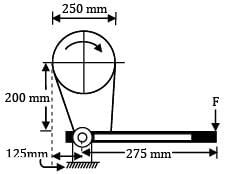
A single block brake with a torque capacity of 250 Nm is shown in figure. The brake drum rotates at 100 rpm and the friction coefficient is 0.35. The hinge-pin reaction for clockwise rotation of the drum is
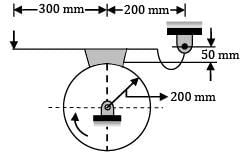


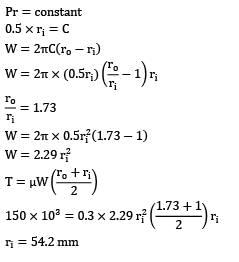

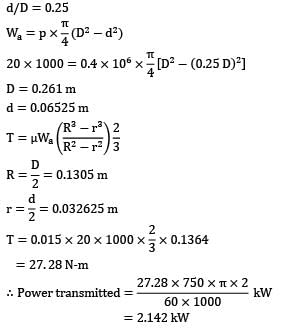

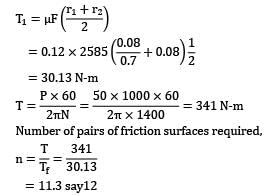
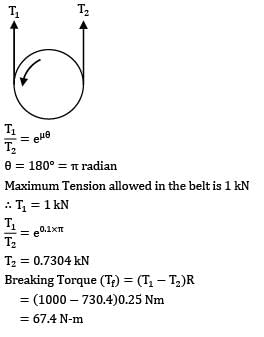
 = 180o =
= 180o =  radian
radian Par(R - r)
Par(R - r)